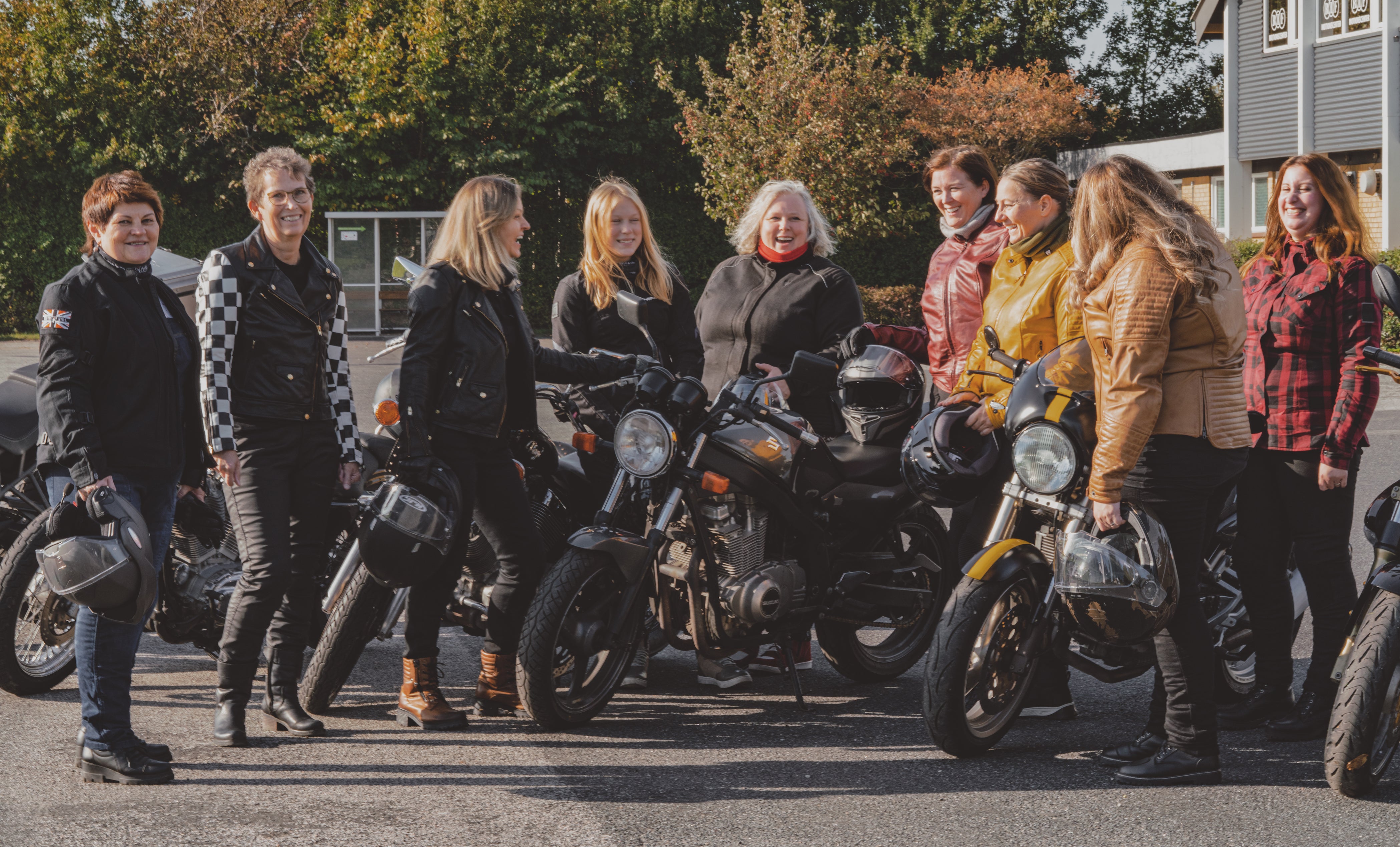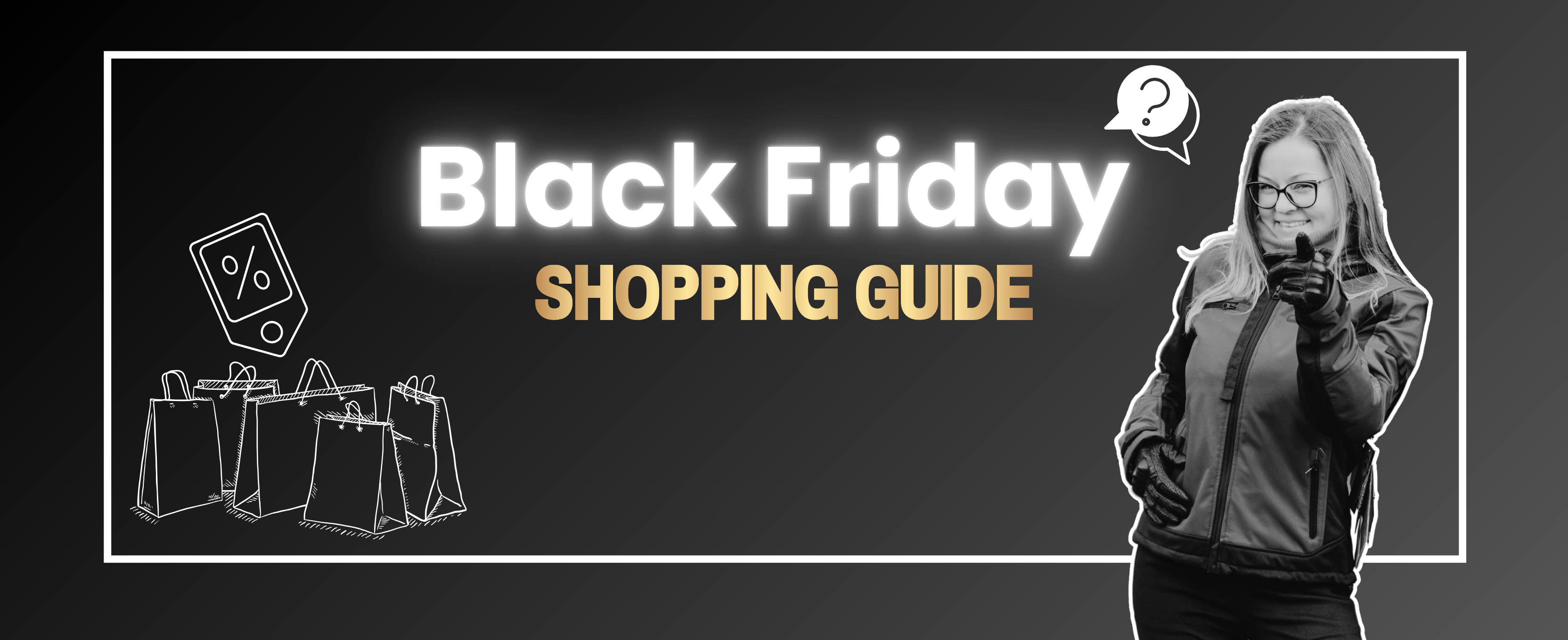Women are the fastest growing group in motorcycling, with more and more ladies “joining the club” every year. What for many years has traditionally been perceived as masculine activity, today is enjoyed my many women around the world. And while it is not anymore uncommon to see a woman on a motorcycle, there still are some challenges that industry and community face when it comes to female riders.
Raimonda’s research focused exactly on that - understanding what are the constraints women face when perceiving motorcycling, and what can be done to minimise those constraints. The research consisted of two parts (and two papers). The first stage focused on identifying the main challenges women experience, which hold them away from motorcycling or influence their experience. The focus group interviews with 9 women riders and the online survey with 1362 respondents took place during this stage. The second stage was a qualitative co-design process with industry and community members where 24 individual & group interviews, workshops and 3 expert interviews were done.
The four main constraints have been identified, which the majority of women riders experience, such as:
- Society's image of women motorcyclists
- Offer of women's motorcycling clothing
- The focus on women in motorcycle shops & dealers
- Motorcycling advertising

Society's image of women motorcyclists
Research analysis led to the conclusion that the way women motorcyclists are perceived by others decrease their enjoyment and create frustration when engaging in motorcycling.
Women mainly deal with two challenges. Society either label them as “cool girls” with assigned masculine characteristics, seeing them as "bad ass bitches” or even lesbians; or they are assigned traditional female social roles and have to deal with society’s perception that motorcycling is not for them (aka - not for woman due to traditional role model).Society’s pressure and expectations are extremely evident when it comes to the motherhood, where women get judged if they continue motorcycling while pregnant or while raising kids. For many – this leads to taking a long break from enjoying their bikes, or not getting into it at all.
Needless to say, such stereotypical image of female motorcyclists do not represent the actual riders.
Offer of women's motorcycling clothing
What probably comes as no surprise, the issue that got mentioned almost by every participant was the lack of protective motorcycle apparel suitable for women. While women collectively agree that the lack of nice, suitable clothes in which they can look good are a real deal breaker, the biggest problem is the correct fitting and sizing. Female riders not able to find proper mc clothes created for women shapes end up wearing mens apparel so compromising not only their looks and convenience, but most importantly - their safety.
The focus on women in motorcycle shops & dealers
The lack of focus on women in mc dealers and shops comes in as another constrain.
Not being approached and being ignored by shop assistants in the shops, especially if they come with a man companion, are common stories shared by female riders. It is either usually assumed that they are not riders, or that they do not understand anything anyway. Some women participants even reported obvious discrimination examples, where they were refused to test drive the motorcycle because of their gender.
Motorcycling advertising
The fourth constrain demonstrated by the research was the motorcycle media and advertising. Not only there is an extreme shortage and unfair amount of women being portrayed in the motorcycle media (magazines, online publications, commercials, even movies and other channels) on general, women’s portrayal either has sexual connotations and are targeted to male glaze, or women are showcased in a submissive position – e.g. as pillion riders rather than motorcycle operators themselves. And even in rear occasions of picturing female in charge of a motorcycle the choice of models represent a very limited population – it is mainly young, skinny, perfectly looking women. Needless to say, majority of women motorcycle riders cannot relate with such advertising and report negative reactions to it.
—-
The second research stage was the master thesis study which, by taking into account the previous learnings, further explored the challenges women face, and by involving various stakeholders from the motorcycle social world looked into the future opportunities of how to make the environment more welcoming and inclusive for female riders. This part of the research was based on the co-design methodology where different actors, in total 24 individuals, representing various roles within motorcycling industry and community, participated on a volunteering basis. Representatives from motorcycle clothing manufacturers, WIMA Denmark, MCTC, driving schools, clubs (such as Harley Davidson or Unge på MC), as well as individual riders took part in the research.
This stage of the research confirmed previous findings and demonstrated new discoveries, such as:
- The challenges in the culture within the social world of motorcycling
- Privilige blideness and challenges with men’s perspective
- Communication issues within the social world of motorcycling
- Knowledge issues within the the social world of motorcycling
The challenges in the culture within the social world of motorcycling
Traditional gendered motorcycle image that is based on masculine characteristics, such as toughness, dominance, danger and similar characteristics is not attractive to female, and surprisingly also not to many male drivers. Women do not care about the technical capabilities of motorcycle, speed one drives or suppose to drive, they do express little interest into motorcycle mechanics or similar matters, and therefore often feel excluded and not accepted in men’s motorcycle environment. Women riders support a less competitive environment, where the riding itself and benefits they feel it brings to their life, is in focus. Freedom, relaxation, self expression, self confidence and simply no-stress riding is what they care about, despite of the speed, power of their motorcycle or other similar aspects. This of course influence their participation in the community, such as common rides, rallys, etc. and builds a barrier between men and women in the social world of motorcycling.
Privilege blideness
The research has demonstrated that there are many struggles between men and women within motorcycle community due to the lack of understanding of female situation. Men tend to not understand the problem female riders are facing, and even react sensitively toward the industry’s focus on women. The findings have shown that the problem occurs not because men don't want to see differences between women and men in motorcycling, but because they are often simply not aware of them.
Communication issues within the social world of motorcycling
Just like the first research stage, this also has demonstrated that women's portrayal in media and advertising comes in a sexualised, masculinised or marginalised image. From the motorcycle magazines to models in motorcycle shows - the majority of woman’s portrayal is out of touch with reality and the way female motorcyclists actually are.
Also, even though social media is broadly used for communication within the social world of motorcycling (various online pages, groups, chat portals, etc.), women lack places where they can ask questions without being criticised or judged, which often happens in, e.g. Facebook groups where men are present. High popularity of the female only groups is the result of it, due to the more welcoming and supportive tone.
Knowledge issues within the the social world of motorcycling
Finally, the research has demonstrated the lack of knowledge women have about motorcycling (things such as technical aspects, mechanics, etc.) which often prevents them from being seen as a full-fledged member of mc community (or at least conversation). The findings have also raised a question, if such knowledge is even important, and if having them should be a decisive factor if one is accepted and seen as a “proper motorcyclist”.
The research participants agreed, that educational practises, such as courses and special events are missing within the social world of motorcycling.
— —
The research focused not only on seeing women situation and identifying their challenges, but also involving male perspective and together finding actionable takeaways on how to make a better place for everyone. A few main reflections and learnings by the study were:
- More "actual"women portrayal and representation is needed within the social world of motorcycling. Female riders and their real stories need to be told and showcased in the media and advertising, not only focusing on traditionally used sexualised and marginalised image of female riders.
- There is a big need for new, modern social spaces within the social world of motorcycling. The traditional “mc club” concept seems to be not working out for many riders (both male and female included) and requires the conceptualisation of social spaces and events that are diverse, open and welcoming for everyone.
- Focus on new riders and their succesful “on-boarding” is essential for the bright future of the social world of motorcycling. Feeling welcomed in the community is one of the most important aspects for individuals to enjoy motorcycling, engage in it more and stick around.
——
So while the research has identified many constraints female riders face today when perceiving motorcycling, it has also demonstrated many opportunities for motorcycle industry and community. Not only how to make women’s situation better, but in general - how to create a more welcoming and inclusive environment for everyone.
You can read the full research papers here (first part and second part).



